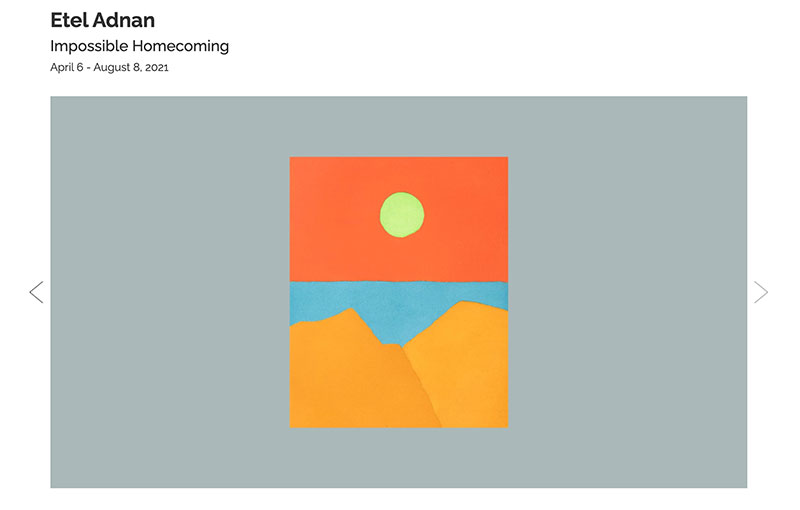Teach This Poem, though developed with a classroom in mind, can be easily adapted for remote-learning, hybrid-learning models, or in-person classes. Please see our suggestions for how to adapt this lesson for remote or blended learning. We have also noted suggestions when applicable and will continue to add to these suggestions online.

Look at Adnan’s paintings in this exhibition, Impossible Homecoming, from the Pera Museum.
The following activities and questions are designed to help your students use their noticing skills to move through the poem and develop their thinking about its meaning with confidence, using what they’ve noticed as evidence for their interpretations. Read more about the framework upon which these activities are based.
- Warm-up: (free-write) Free write about anything on your mind. Make a quick line drawing that represents your thought process. After you finish, share your writing with a partner or small group of classmates. What did you notice about your writing, your thoughts, and your drawing process?
- Before Reading the Poem: Look closely at the images in the exhibition, Impossible Homecoming. What do you notice? What stands out to you?
- Reading the Poem: Now, silently read the poem from “Surge” by Etel Adnan. What do you notice about the poem? Note any words or phrases that stand out to you or any questions you might have.
- Listening to the Poem (enlist two volunteers to read the poem aloud): Listen as the poem is read aloud twice, and write down any additional words and phrases that stand out to you.
- Small-group Discussion: Share what you noticed in the poem with a small group of students. Based on the details you just shared with your small group and your writing and drawing from the beginning of class, what are your favorite lines/phrases in the poem?
- Whole-class Discussion: What is a surge, and why might it be the title of this poem? Read more information in the “About This Poem” section. What else does this make you think or question about the poem?
- Extension for Grades 7-8: In honor of Arab American History Month, read more poets. Choose one poet to honor this month and read more work by this poet.
- Extension for Grades 9-12: Learn more about Etel Adnan’s work. Choose one or more of Adnan’s writing pieces and write about how they might compare or contrast with Adnan’s artwork.
“Etel Adnan was trained as an academic philosopher, but found her voice as a poet. In her poems she grapples directly with the violence, destruction, and displacements that she has witnessed throughout her life. In contrast, her bright, lucid paintings can appear as a source of emotional expansion, of spiritual renewal, and of hope.” Watch this short video from the Guggenheim Museum about Adnan’s work.
This week’s poetic term is ekphrasis, or a poem that focuses on works of art—usually paintings, photographs, or statues. Modern ekphrastic poems have generally shrugged off antiquity’s obsession with elaborate description and, instead, have tried to interpret, inhabit, confront, and speak to their subjects. Read more.
